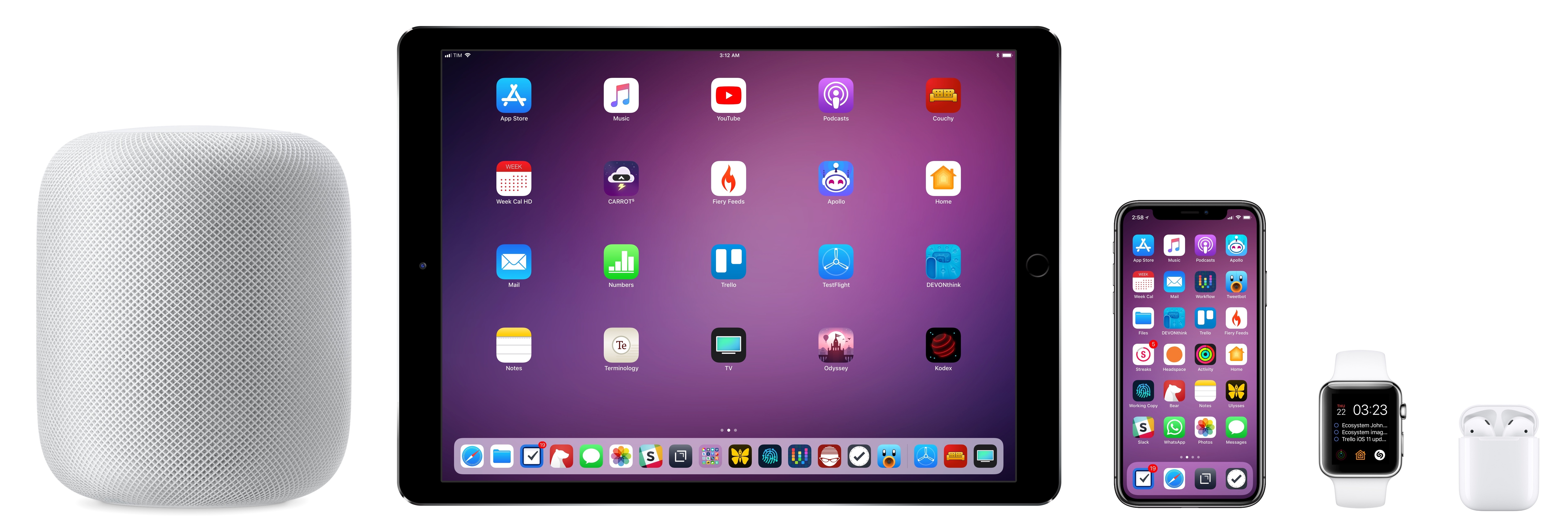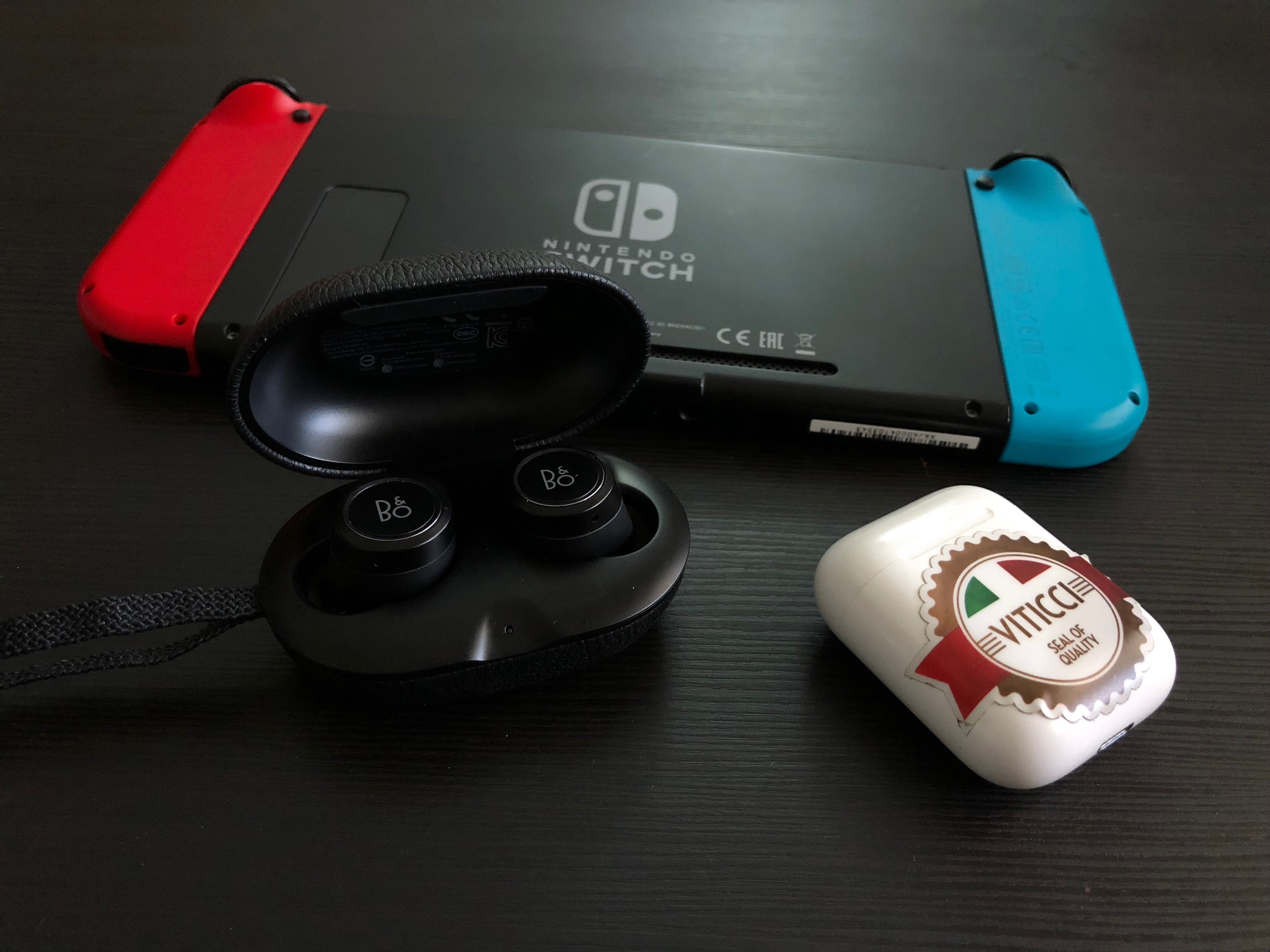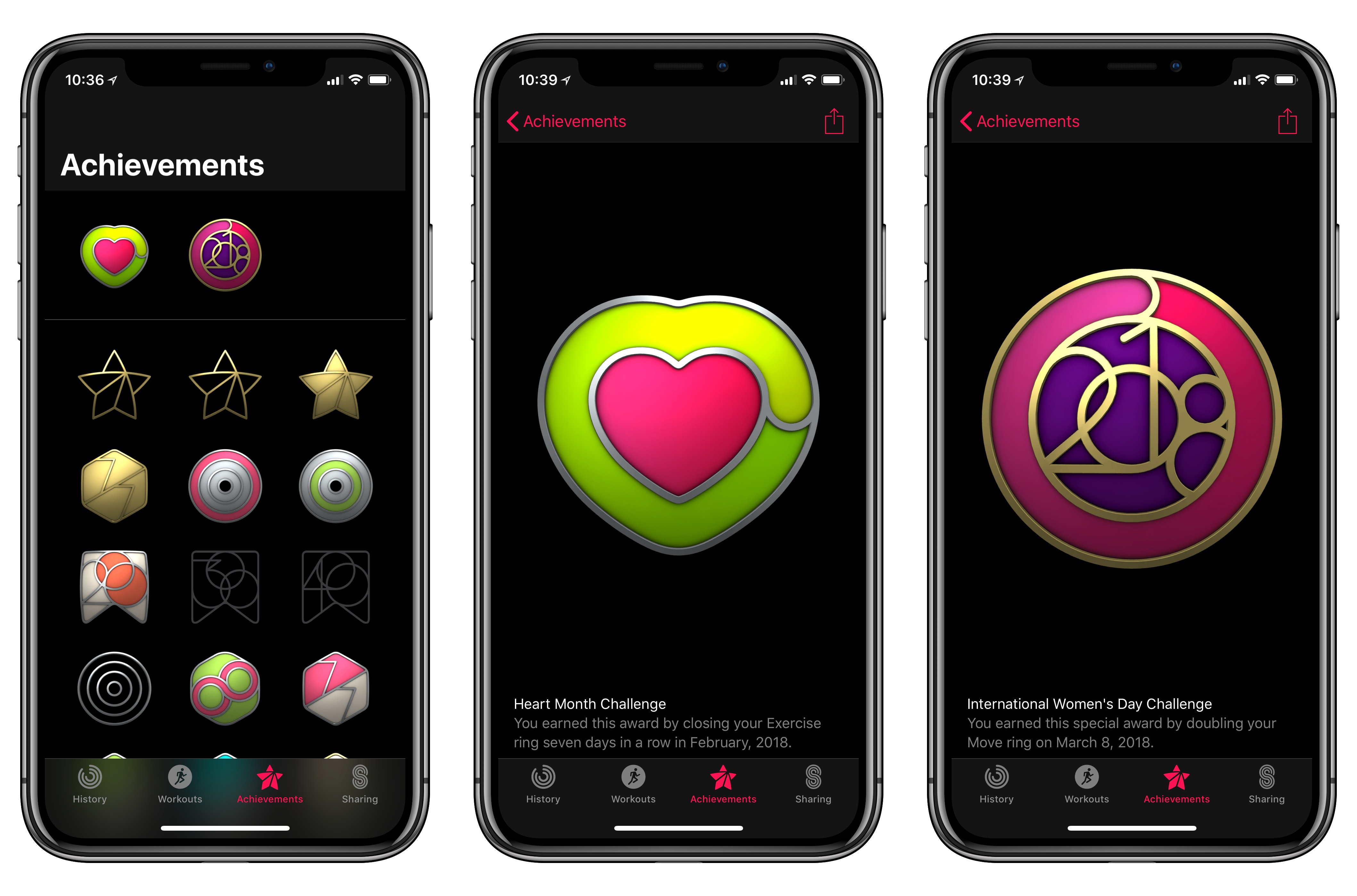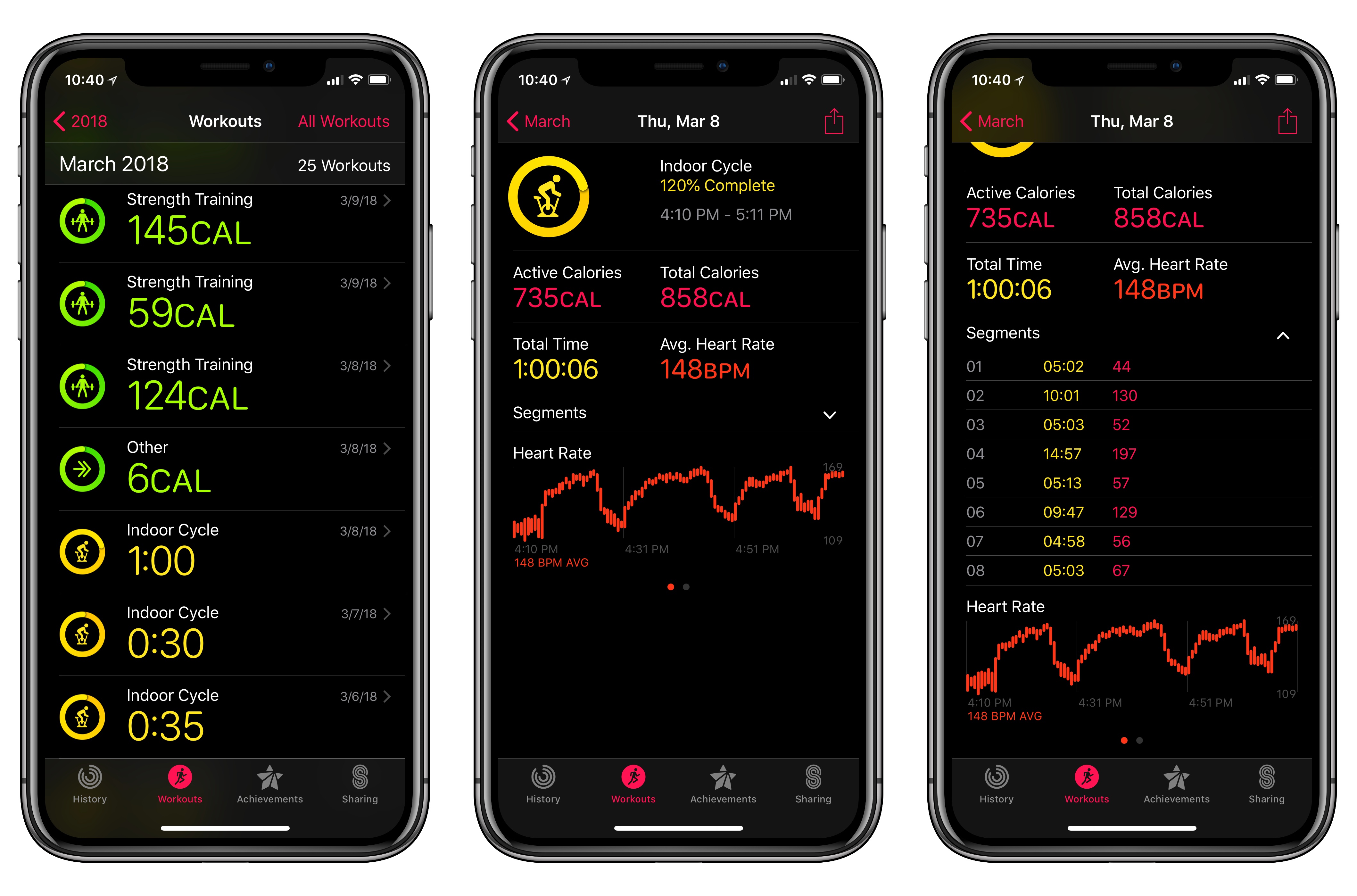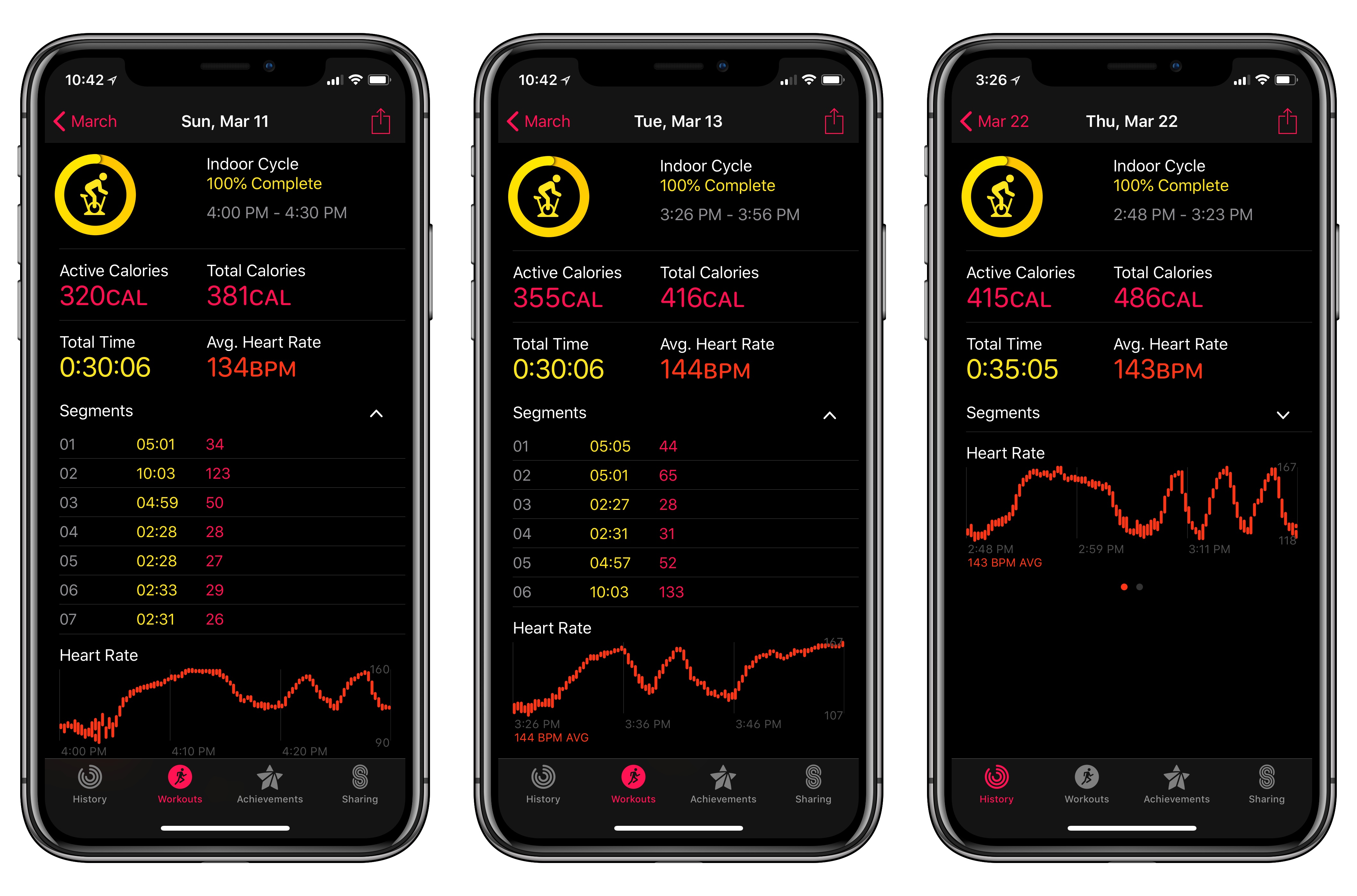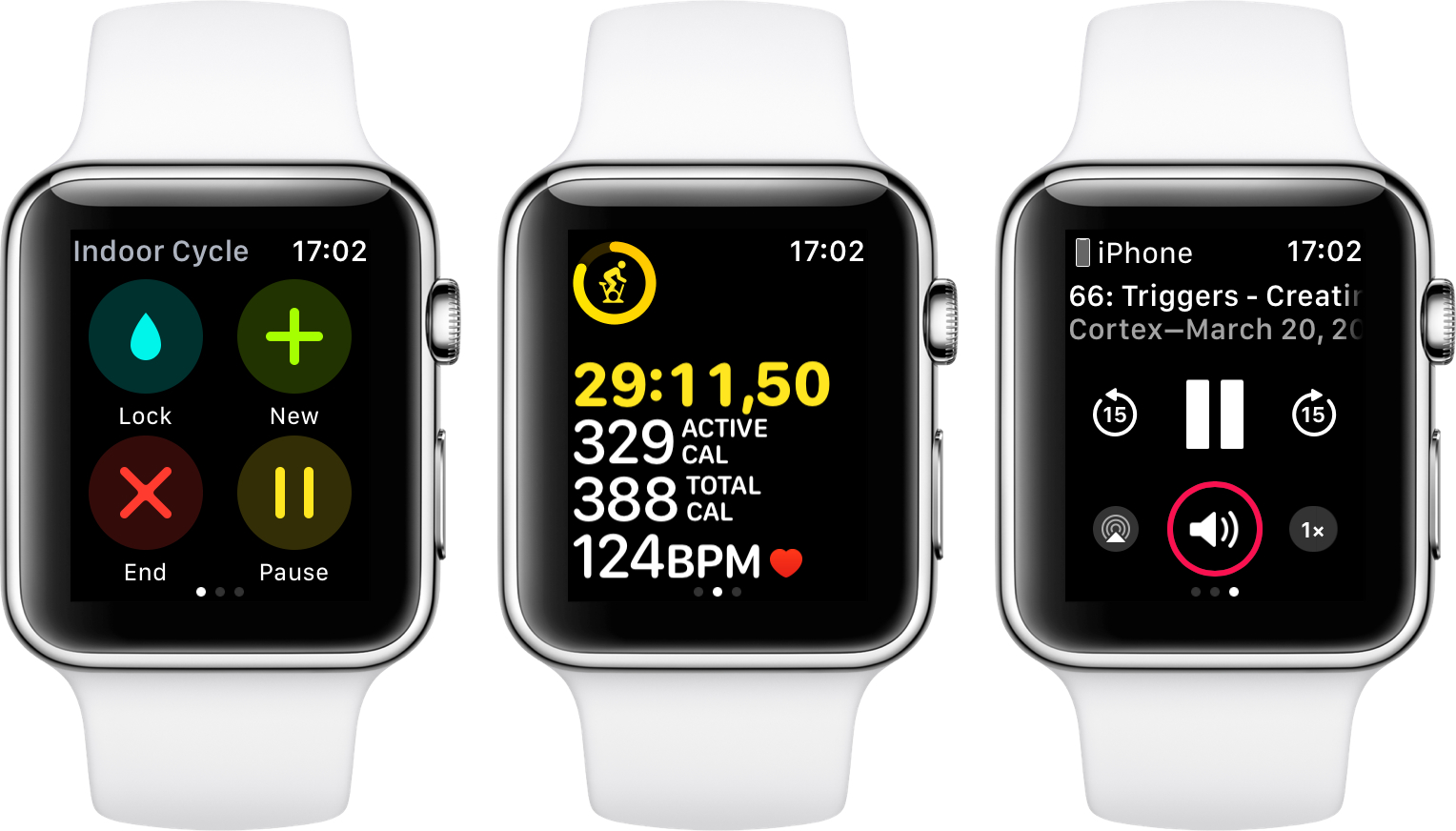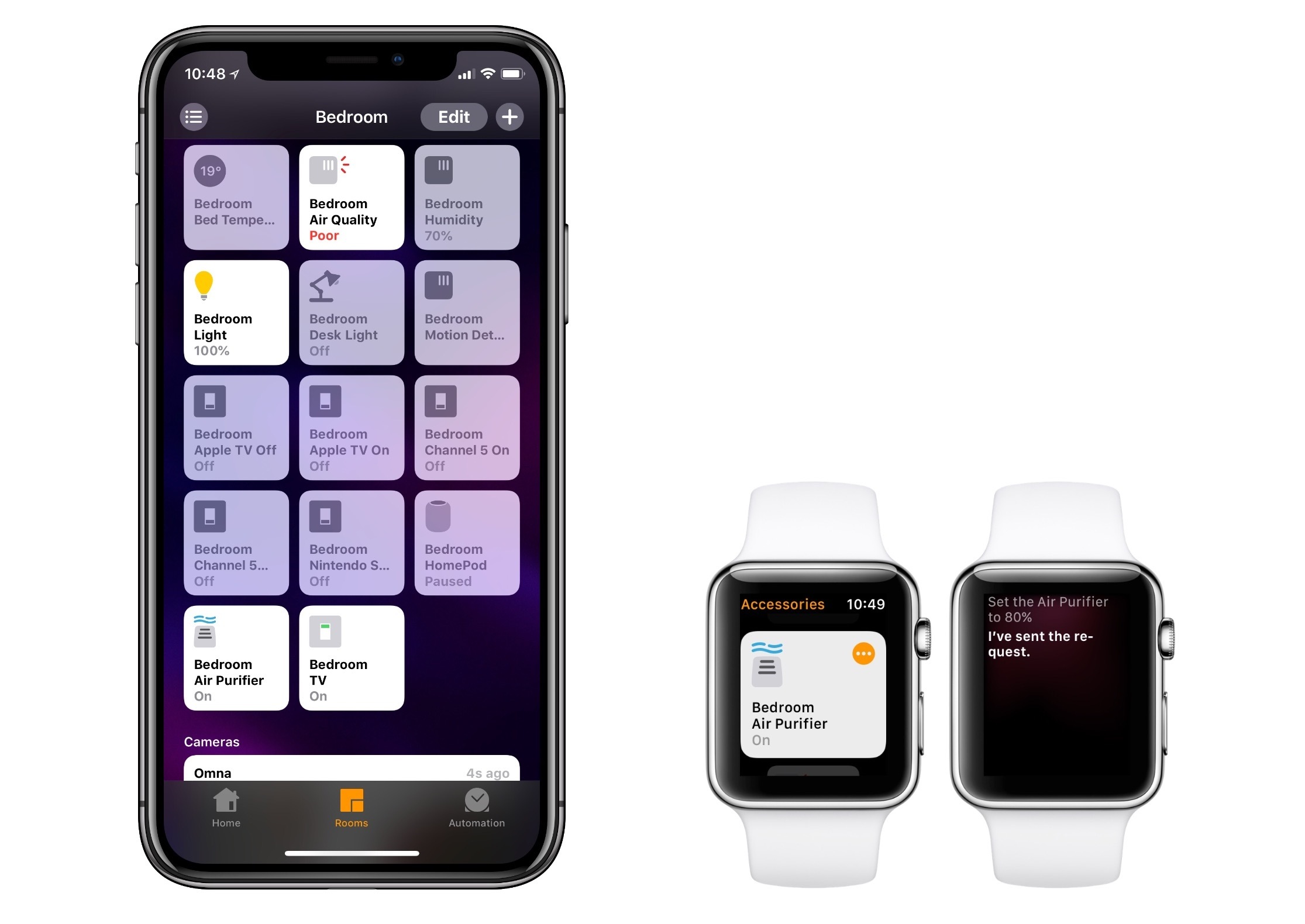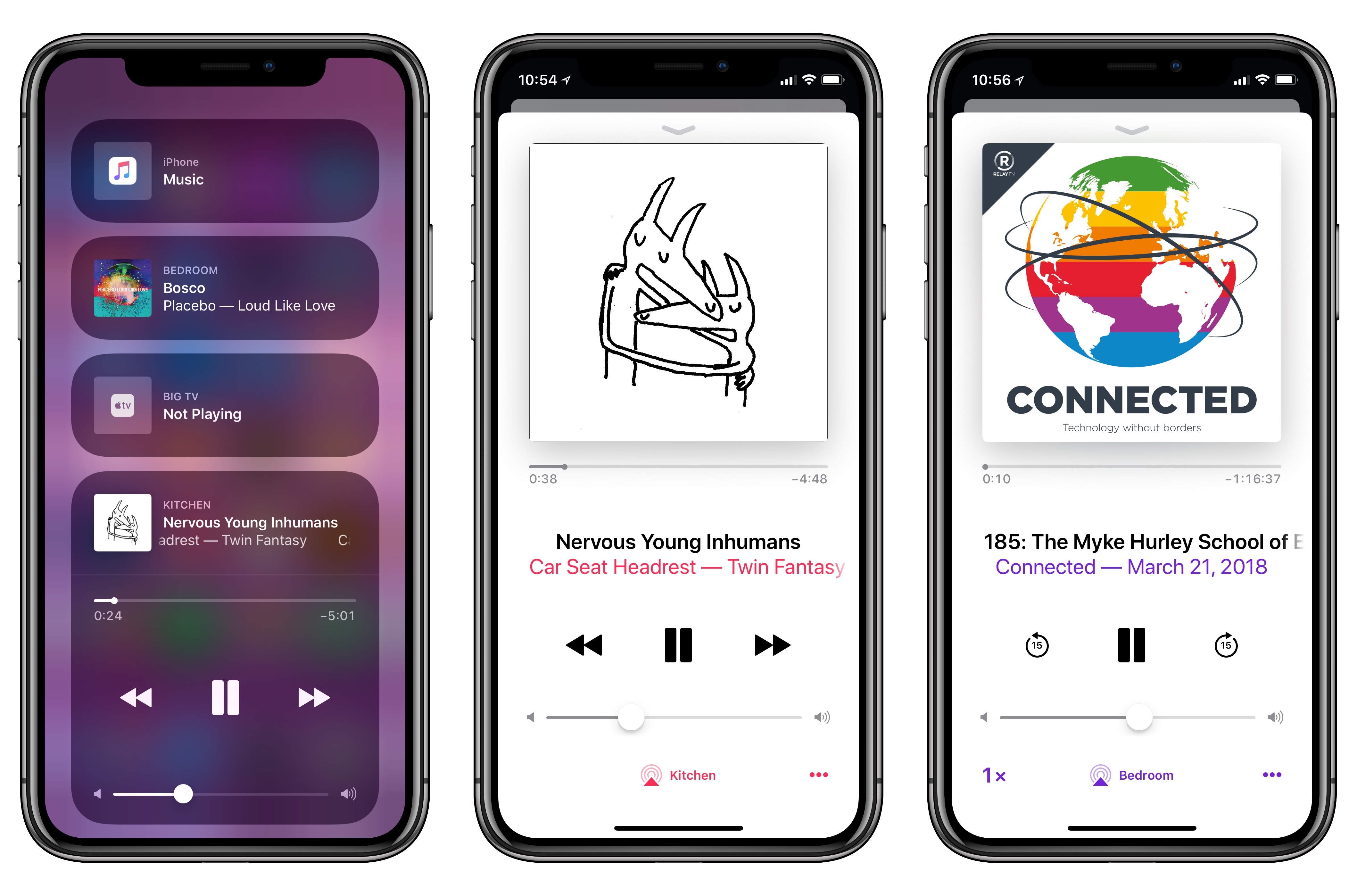Every year soon after WWDC, I install the beta of the upcoming version of iOS on my devices and embark on an experiment: I try to use Apple’s stock apps and services as much as possible for three months, then evaluate which ones have to be replaced with third-party alternatives after September. My reasoning for going through these repetitive stages on an annual basis is simple: to me, it’s the only way to build the first-hand knowledge necessary for my iOS reviews.
I also spent the past couple of years testing and switching back and forth between non-Apple hardware and services. I think every Apple-focused writer should try to expose themselves to different tech products to avoid the perilous traps of preconceptions. Plus, besides the research-driven nature of my experiments, I often preferred third-party offerings to Apple’s as I felt like they provided me with something Apple was not delivering.
Since the end of last year, however, I’ve been witnessing a gradual shift that made me realize my relationship with Apple’s hardware and software has changed. I’ve progressively gotten deeper in the Apple ecosystem and I don’t feel like I’m being underserved by some aspects of it anymore.
Probably for the first time since I started MacStories nine years ago, I feel comfortable using Apple’s services and hardware extensively not because I’ve given up on searching for third-party products, but because I’ve tried them all. And ultimately, none of them made me happier with my tech habits. It took me years of experiments (and a lot of money spent on gadgets and subscriptions) to notice how, for a variety of reasons, I found a healthy tech balance by consciously deciding to embrace the Apple ecosystem.
This shift didn’t come out of nowhere. After a stressful 2017 that brought several new responsibilities in my life along with a persistent sense of overwhelmedness, I accepted the fact that I no longer tolerate any unwarranted friction in the technology I use. I understood that the busier I was, the less I wanted to remember the trade-offs I was imposing on myself by trying to fit ecosystems from competing tech companies around the iPhone and iPad.
iOS has long been my platform of choice. However, by a combination of curiosity and fear of missing out, I spent the past few years adding layers of complexity (in the form of audio gadgets, set top boxes, web services, digital assistants, etc.) that almost kept me from enjoying the technology I had.
Put simply: I tried too much, for too long, and it was time for a reset.
A couple of months ago, I came to the conclusion that I needed to go back to basics. A technological cleanse, if you will. This was a process that simmered for months and matured alongside my motivation to make 2018 a more relaxed and positive year for me.
In a surprising twist, I had ended up in a similar place to where MacStories started in 2009: surrounded by tech I found too complex and yearning for something simpler and consistent. And just like nine years ago, today I find comfort in using Apple products I like, which run software that is sometimes great, often good enough for me, and which are by no means perfect and should still be improved. I spent years obsessively pursuing a fleeting, idealistic version of “the absolute best tech”; now I’m just comfortable where I am and I want to make the most of it.
I’m fully aware of how abstract this may sound. Finding technology that, despite its imperfections, “just works” for you is a personal topic that can’t be used to make blanket statements about the state of tech ecosystems. But I want to explain my process and ongoing themes of simplification and cohesiveness in the technology I use, as they’ll be reflected on this website going forward. Thus to get a little more specific, I’m going to examine three defining moments that played an essential role in this story, and how they fit the bigger topic of re-approaching the Apple ecosystem.
AirPods
It’s a popular sentiment to consider AirPods the best Apple product in recent years. For me, that would be a close-run race between the 12.9” iPad Pro and the iPhone X. But I feel confident saying that AirPods are the best audio accessory I’ve ever owned in my entire life.
It’s important, of course, to judge a pair of headphones or earbuds by several factors such as sound quality, comfort, and price. In the case of wireless headphones, battery life and reliability also come into play. Over the years (partly because of Marco), I’ve accumulated a decent collection of mid-level (some would say “prosumer”) headphones and earbuds; to name a few, I currently own the Audio Technica ATH-M50x, B&O H6 (2nd gen), Beats Studio2 and Solo3, Senneiheiser Momentum 2.0, Pioneer Rayz Plus, and Beoplay E8. There are probably more I don’t remember, some of which I have given to close friends. All of them sound better than the AirPods. But none of them are as convenient, intuitive, or consistently trustworthy as my AirPods.
This is something I’ve been thinking about a lot since I started working out every day and having a more active lifestyle. I use my AirPods every day, multiple times throughout the day, in contexts when I feel like I want to listen to audio without disturbing other people. Unless I’m extremely focused on writing, complete silence freaks me out. If I’m around other people, or if I don’t want to listen to music or a podcast on my HomePod, I put my AirPods on. And they always work. They’re never out of battery, they never get out of range when I walk around the house, and they support all the basic controls I need. Combined with my Apple Watch, the AirPods fit so seamlessly in my lifestyle without requiring additional thought, they have become second nature.
For me, the best headphones aren’t necessarily the ones that sound “the best”. Sure, there is a time and place for sitting down, putting on a great pair of quality over-ear headphones, and just listening to music. I still do this with the H6 and Momentum Wireless, and it’s exactly why I hope Apple is indeed working on their own over-ear headphones. But over time I’ve realized that the absolute best sound reproduction isn’t my priority. Simplicity, reliability, and fast access to audio in my ears is what I’m looking for.
AirPods deliver on all these fronts: the combination of good-enough sound and deep integration with iOS means I’m free to listen to music or podcasts in more places or situations that would otherwise be problematic (or downright unfeasible) for other types of headphones or earbuds. I can summon Siri with a quick double-tap on the left AirPod and transfer phone calls from my iPhone without having to worry about cables, range, or hidden gestures. AirPods give me independence while also being intrinsically tied to the iPhone.
The Beoplay E8 wireless buds are emblematic of my relationship with AirPods and Bluetooth headphones. A few months ago, I decided that I wanted to play videogames on my new 4K TV and listen to game audio with an AirPods-like product. I didn’t want standard headphones or wired earbuds; I also didn’t want to buy another pair of AirPods because it seemed redundant. And I didn’t want to switch pairing on my existing AirPods either; I was looking for AirPods-like earbuds that would just connect to my TV and nothing else. I was curious, so I bought the E8.
I was expecting some of the simplicity of AirPods in these “truly wireless” earbuds; instead, I feel like I’ve never been as frustrated or confused with any Bluetooth headphones as I am with the E8. Yes, they sound “better” than AirPods: the bass is warmer; the soundstage wider. But they don’t sound that much better than AirPods and, more importantly, using them requires learning a confusing set of gestures (just look at the manual!) for activation and playback controls that often results in accidentally turning them off or not seeing them in my TV’s pairing UI. When they do work, audio in the left earbud gets consistently cut off despite sitting two meters away from my TV. Even putting them back in the case isn’t intuitive. And of course they use Micro-USB charging instead of Lightning or USB-C, so connecting a cable to the case can be cumbersome too. I’m going to sell the E8 and I’ve gone back to using wired headphones to play videogames at night.
When I want to listen to music or podcasts or have phone calls with my AirPods on iOS devices and my Apple TV, I don’t have to think about any of these incongruences and technical issues. There is no pairing and no audio interruptions; if I need to manually switch to AirPods from another device, I can do so from Control Center, even from the Apple Watch. This is something that I’ve only been able to appreciate by using AirPods for over a year and listening to more music and podcasts every day for the past three months. AirPods have made me forget about the annoying issues of standard Bluetooth accessories. I put them on every day without thinking about them anymore.
By freeing me from the need to think about audio management, AirPods liberate sound. They may not be “the best”, and they can still be improved, but I wouldn’t trade the astounding simplicity of AirPods for anything else.
Apple Watch: Workouts and HomeKit
I’ve owned an Apple Watch since the first version released in 2015, but I only started truly appreciating some of its core functionalities over the past three months. The two Apple Watch features that I wouldn’t be able to give up now (fitness tracking and HomeKit controls) aren’t directly related to each other, but they’re part of the overarching theme of getting more value out of Apple’s multifaceted ecosystem.
As I touched upon in my New Apps story last month, over the holidays I decided that I would take better care of myself in 2018. I started the new year with the modest goal of working out at least three times a week; in early February (in part because of Apple’s Heart Month activity challenge) I upgraded to exercising and closing my rings every day. It’s been 44 days now, and I haven’t missed a single day. I’ve lost 10 pounds since the beginning of 2018, I feel stronger than ever, and I largely attribute this renewed mindset to the motivation the Apple Watch and Activity app give me on a daily basis.
I’m a cancer survivor, and for the past couple of years I’ve felt ashamed of the fact that I wasn’t spending enough time exercising and thinking about my “second life”. Thankfully, the Apple Watch combined with Apple’s Workout and Activity apps make it extremely easy (and almost fun) to get back into an exercise routine that feels rewarding and not condescending.
Due to my lack of regular physical activity, my initial Move goal was low – around 300 calories per day. As soon as I started working out and being more active during the day, the Watch helpfully offered to bump up the goal a little for the following week. Then it asked again a couple of weeks later. And when I started working out every day, it offered a higher jump. More than a month later, my Move goal is now at 680 calories and I’m planning on raising it to 780 soon given how I’m consistently hitting ~750 calories every day.
It’s not just about numbers though. A lot of people assume that Apple’s regular Activity Challenge events are just marketing campaigns to remind users about the Activity app and iMessage stickers. I strongly disagree with that idea as I’ve experienced the practical benefits of two Apple Watch challenges myself.
The first challenge I participated in (the Heart Month one) required me to close my Exercise ring seven days in a row. After the first week, I had gotten so used to dedicating an hour each morning to workouts, I figured it made no sense to stop. That first challenge encouraged me to work out every day but, indirectly, it also pushed me to rethink my schedule around carving a chunk of time for myself in the morning, thus waking up earlier and getting more done throughout the day. It’s astonishing how the effects of an Activity achievement badge rippled through my daily routine.
The second challenge (International Women’s Day) required me to build endurance and work out for longer than 30 minutes. The challenge involved doubling your Move goal, and at the time mine was sitting at 660 calories. I knew that attempting a 60-minute workout was the only way to hit 1,320 calories in a single day. To prepare for the challenge, I started indoor cycling sessions of 35, 45, and eventually 50 minutes.
I was confident that I was going to win the challenge if I followed a specific pattern of intensity during the workout – which I did thanks to real-time heart rate data measured by the Polar H10 chest strap I connect directly to the Watch when I work out. I bought this sensor specifically because it can be paired with the Apple Watch via Bluetooth without using a third-party app in the middle.
I unlocked the achievement, and thanks to the challenge I’ve begun experimenting with different workout lengths and varying levels of intensity. All of this because of a challenge that some people would dismiss as a “silly” marketing campaign.
Apple’s achievement-based system in the Activity app drove me back to the built-in Workout app on the Watch, too. One of the achievements required logging workouts in the Workout app every day for a week, so, even though I preferred the personalization features of Workouts++, I temporarily switched to Apple’s Workout. In doing so, I discovered that the Workout app included the ability to create segments for workouts (double-tap on the screen) and, more importantly for me, an embedded Now Playing widget on the right side of a workout’s stats page.
Once again, I want to point out the fascinating halo effect that an Activity achievement had on my habits. To unlock the badge, I switched to Apple’s Workout app, where I found a native Now Playing screen to control audio playback. I like to listen to podcasts while I’m working out, so I thought that I could easily control episodes playing on Overcast without leaving the Workout app. However, I was running into issues with Overcast, which wouldn’t respond to pause and skip commands issued from the Watch’s Now Playing widget (both when streaming via my AirPods and HomePod). So I switched to Apple’s Podcasts app, whose controls worked fine on watchOS.
From there, I remembered that Podcasts supported native Siri controls for episodes and stations via the HomePod, so I kept using Apple’s Podcasts app even after I earned the Workout-exclusive badge. I now frequently invoke Siri when I’m cooking or doing things around the house to listen to short shows such as Subnet and 9to5Mac Daily, or to resume episodes I previously started on my iPhone. I miss Overcast’s Audio Boost and Smart Speed, but the convenience of having reliable podcast controls on the wrist, Siri commands around the house, and playback position synced with iCloud is too useful to give up.
I’ve been using Apple’s Podcasts app every day for over a month now, and it can all be traced back to unlocking an Apple Watch achievement. This kind of deep integration across multiple apps and platforms strikes me as something that can only happen within the Apple ecosystem.
Besides helping me get back in shape and lose weight, I’ve also rediscovered the utility of the Watch as a HomeKit remote I can whisper commands to.
I’ve been buying a few HomeKit-compatible accessories as well as re-purposing old devices for HomeKit compatibility through Homebridge. While I think Apple’s Home app is an interface disaster that needs a complete redesign and revamp of its navigation, I love the cohesiveness of the underlying HomeKit framework.
HomeKit lets me issue the same requests from my iPhone, wrist, kitchen, bedroom, and even my iPad’s keyboard thanks to Type to Siri. With Siri on the Apple Watch, I can speak quietly into the microphone on my wrist when everybody has gone to bed to dim the lights or turn off the air purifier. When I’m playing with the dogs outside and the HomePod can’t hear me, I can quickly raise my Apple Watch and say “turn on the coffee maker” so that when I’m back in the kitchen, the espresso machine is ready for me. Siri has become my primary input method for HomeKit on Apple Watch without forcing me to learn a new vocabulary of commands.
Apple has done an admirable job in integrating HomeKit controls in all their products1, with deep ties that range from remote access through hubs (Apple TV and HomePod) to rich notifications with camera snapshots and Siri on watchOS. In my experience, HomeKit is faster, better integrated, and more versatile than any other third-party home automation system available to iOS users. The Apple Watch makes for an excellent HomeKit remote when coupled with Siri – something that I wouldn’t have been able to enjoy had I continued using the Google Assistant or Alexa.
HomePod(s)
In just over a month, the HomePod has become a central point of interaction with Siri in our apartment. In fact, limitations of a 1.0 product notwithstanding, I liked the sound quality and Siri integration of the HomePod so much, I quickly bought a second one and placed it in our bedroom. We now own two HomePods – one stays in the living room, the other on my nightstand – and both my girlfriend and I use it to control HomeKit, ask questions to Siri, and play music dozens of times each day.
What surprised me the most about Apple’s HomePod is that, despite some obvious weaknesses and problems with Siri, what it does today is enough to make us appreciate the device’s role in our household.
For instance, I still haven’t been able to get any third-party SiriKit integration to work and I’ve come across questions that Siri on HomePod can’t answer, but which the iPhone handles just fine (such as TV trivia). Lack of multi-user identification is another glaring deficiency of HomePod today. There is a clear fragmentation problem with Siri and I would urge Apple to reconsider their stance on tying HomePod integrations to apps locally installed on an iPhone (they should be services hosted in iCloud instead). And yet, even with these problems that Apple has to fix (I can’t stress this enough), the value we get from a pair of HomePods is more than enough to justify the expense and placement of two medium-sized speakers in our apartment.
It all comes down to HomePod’s integration with an ecosystem we’re deeply embedded in. My girlfriend and I are Apple Music subscribers; she’s a dancer and choreographer, so she needs to listen to old songs and new releases every day. We also like to relax and play with the dogs at the end of the day while listening to music, so we share a few playlists where we can each add new songs. The HomePod, both at 80% and 40% volume, sounds fantastic and allows us to a) fill the bedroom with music and b) hear the finer details of sounds that Silvia needs for her choreographies.
As Apple Music subscribers without the baggage of an old iTunes library, being able to request playlists, manage our Up Next queue and see lyrics on iOS, and control playback from the Apple Watch is an intuitive and integrated setup that I was never able to achieve with the Amazon Echo, Google Home speaker, Plex servers, or Android TV (I tried them all). I don’t have to worry about the limitations of third-party music services because, for better or worse, Siri and HomePod are accessible everywhere, including our Apple TV and iOS’ Control Center. When I want to nerd out – and I am extremely serious about this – I can add songs to our shared Family playlist using a workflow because, yes, the Workflow app natively integrates with Apple Music too.
The same is true for podcast playback. As I mentioned above, I miss the audio effects of Overcast and its superior show note design, but I’m effectively forced to use Apple Podcasts if I want the ability to resume playback via Siri on the kitchen HomePod or play one of my stations with a single command. I could use Overcast with AirPlay, but streaming from the iPhone has been unreliable in my experience, and I would lose the Siri integration that lets me control podcasts hands-free.
There’s a common pattern here: as with other services, third-party alternatives offer superior features that are compelling when considered individually; taken as a whole, however, Apple’s native offerings are consistent, ubiquitous, and integrated in a way that their limitations and problems aren’t – at least for me – severe enough to undermine their core functionality.
Lastly, HomePod – perhaps even more than music and podcasts – has been a resounding success for HomeKit controls. This is one of the aspects of smart speakers that I appreciated with Alexa and Google before; I remain convinced that the utility and accessibility of smart speakers for the smart home is something Apple should continue to invest in.
I don’t buy the idea that the HomePod is “just a music speaker” when I can ask Siri to manage my lights, set a speed for my air purifier, or turn on specific scenes. Once you try these actions along with other Siri features, it’s obvious that there’s more to the HomePod than music playback alone. There absolutely is value in being able to shout out commands to a stationary speaker as you’re walking and doing things around the house. In that case, the HomePod’s Siri fills a role left vacant by other instances of Siri on iOS and Apple Watch. It becomes a true hands-free home assistant.
With two HomePods in our apartment, I can ask Siri to do something in the living room and my girlfriend can ask the bedroom one to turn on the television and switch its HDMI input2 to the Apple TV; the more I use our HomePods for smart home controls, the more I’m thinking of new HomeKit devices and automations that could make interacting with appliances and sensors faster and more convenient in everyday life. And as I do this, I can see how a vibrant and reliable third-party Siri skill ecosystem (unlike the current SiriKit chaos) is a key aspect of the smart speaker experience that Apple should pursue and nurture going forward.
Even though there are several gaps to be filled, our HomePods have made Siri a pervasive presence around the house that helps us on a daily basis. While Siri has a long road ahead to catch up with certain aspects of other assistants, HomePod’s integration with the Apple ecosystem is already proving its worth. I’m optimistic about the HomePod, and I hope that, beyond the marketing and PR, Apple knows it’s more than an Apple Music speaker. Parts of the experience already prove as much.
There and Back Again
There are two takeaways from this story: I was looking for simplicity in my tech life, which led me to appreciate Apple products at a deeper level; as a consequence, I’ve gained a fresh perspective on the benefits of Apple’s ecosystem, as well as its flaws and areas where the company still needs to grow.
I’ve spent the past couple of years as a sort of digital nomad, traversing ecosystems, testing accessories or services made by different companies, and hoping they’d all somehow fit my iPhone and iPad. The result was a Rube Goldberg machine of tech gadgets that gave me the peace of mind of knowing I had dipped my toes in every pond I could find.
I don’t regret it: I’m glad I used an Android phone for two months, a Sonos PLAY:1 for an entire year, and an Nvidia Shield TV for six months, because all those experiments taught me something about the modern state of technology. But I feel confident in my decision to let go of them: I was craving the simplicity and integration of apps, services, and hardware in Apple’s ecosystem. I needed to distance myself from it to realize that I’m more comfortable when computers around me can seamlessly collaborate with each other.
At the same time, I’m not blind, and I’m aware of the shortcomings of Apple’s ecosystem. I want to take advantage of this position to advocate for better OS features and services for Apple’s customers here on MacStories. We are at a unique moment in Apple’s history as the company has expanded its reach to home automation, health tracking and medical research, wearable computers, and augmented reality. There will inevitably be missteps; I want to use my past experiences to keep an open mind and understand them.
It’s possible to like something and still point out its flaws. This is an unpopular opinion both among those who think Apple can do no wrong, as well as folks who think they’ve done nothing important after Steve Jobs. I strongly believe that both extremist camps are misguided.
More than ever, consumer technology choices come down to picking the compromises we’re willing to accept and the best overall experience for us. These two sides aren’t mutually exclusive. For instance, you can love the Nintendo Switch and still think that the lack of a Virtual Console and cloud saves is downright user hostile. You can be a fan of Spotify’s remarkable intelligence, but also find its user interface design uninspired. You can recognize the fact that Siri should be substantially improved – if not rebuilt altogether – but also like it for the things it gets right today.
Over time, I’ve come to understand that it’s important for me to have all my devices work together without micromanaging them. And after years of experiments, I’ve realized that the Apple ecosystem, despite the occasional stumble, gets rid of the complexities and limitations that stressed me out in other products that are not as integrated as Apple’s.
This doesn’t mean that I’m going to use Apple apps everywhere: I still seek out alternatives in the areas where I feel Apple is not delivering enough value. However, especially for hardware and the all-encompassing iCloud service3, today I’m okay treating the Apple ecosystem as my baseline.
Interestingly, products orbiting the iPhone are what pushed me to reconsider the role of Apple’s ecosystem in my life. With the iPhone (and, to a lesser extent, the iPad) as the new hub, devices such as AirPods, Apple Watch, Apple TV, HomePod, and services like Apple Music or even the TV app gain power from the tight integration and feed their value back into the entire chain. The iPhone may be at the center of it all, but, holistically speaking, the strength of Apple’s ecosystem is the harmony through which all components create a unified experience greater than the sum of its parts.
It took me years to understand that the value I get from Apple’s ecosystem far outweighs its shortcomings. While not infallible, Apple still creates products that abstract complexity, are nice, and work well together. In hindsight, compulsively chasing the “best tech” was unhealthy and only distracting me from the real goal: finding technology that works well for me and helps me live a better, happier life.
As it turns out, I had the answer years ago. I just needed to be reminded of it to appreciate what I have again.
- Well, except the Mac, which doesn’t make any sense. ↩︎
- Thanks, Homebridge. ↩︎
- Funnily enough, I wrote about this in 2011. ↩︎


